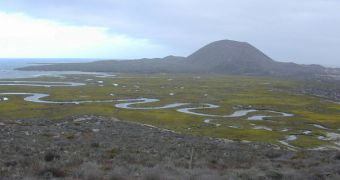Researchers at the University of California in Santa Barbara (UCSB) say that small and large species alike respect the same rule when it comes to determining how common they are in a given ecosystem.
All ecosystems on our planet contain numerous species of animals, plants and microorganisms, and all these species are involved in a complex web of relationships and interactions. The food webs help keep populations in check.
It could be argued that ecosystems have the tendency to balance themselves. There are for example many species at the bottom of the food chain, which help feed larger predators. But there are fewer large animals overall, because they require more energy.
A decrease in prey populations leads to a decline in predators. However, when it comes to establishing how common a species is likely to be encountered in a certain area, a simple rule can be applied.
Experts say that knowing the weight of an organism's body and its position in the food chain is everything that's needed to assess how common it's likely to be. In this sense, one could envision analyzing ecosystems without actually having to set foot within.
“This comprehensive study has revealed a very simple rule that underlies a complex system. Extracting such simplicity from complexity will allow scientists to better understand and manage all natural systems from forests, to lakes, to ocean fisheries,” Sam Scheiner explains.
The expert holds an appointment as an EID program officer at the US National Science Foundation. The NSF and the National Institutes of Health (NIH) funded the new research through their joint Ecology of Infectious Diseases (EID) program.
UCSB biologist biologist Ryan Hechinger was the leader of the study, and also the lead author of anew paper detailing the findings. The work appears in the July 22 issue of the top journal Science.
“If we want to understand how life works, how species make their living, how can we do that if we don't look at most species – the parasites? Including parasites in our study let us see the true patterns in nature,” Hechinger explains.
Thus far, investigations such as this one failed to take microorganisms into account to the extent that these important lifeforms deserve. “Paying attention to parasites at the same time as other animals is key to the results,” the investigator goes on to say.
Ecological science has the tendency to ignore parasites living inside or on all other species, even if the microorganisms make up for more than half of all biodiversity on the entire planet. Not taking them into account is a major lapse.

 14 DAY TRIAL //
14 DAY TRIAL //